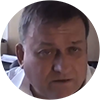One of the most significant business trends today is the growing use of Artificial Intelligence (AI).
Aside from helping with data analytics, many businesses also use AI in digital marketing to produce articles and images.
AI-generated content offers fast and efficient content creation at a lower cost than hiring a dedicated writer/graphic designer. Just input the right prompts in ChatGPT or any AI chatbot and you’re good to go.
Combine this with outsourcing to countries like the Philippines, and you can boost your company’s growth and presence at a fraction of the cost.
However, there are also many pitfalls associated with using AI content that businesses should be wary of.
Here are some reasons to think twice before using AI-generated content – and how to spot them yourself.
Plagiarism
The most significant downside of relying on AI-generated content is the risk of plagiarism.

Before they can generate content, AI must first be “trained” using data from the internet. It’ll then use this pool of knowledge to create an article or image best suited to the prompt given to them.
As a result, it may end up using copyrighted articles and images when generating content, particularly if they’re very popular.
If you’re not careful and don’t double-check your AI’s work, your brand may end up facing accusations of plagiarism – especially now that many artists are discovering that AI has been copying their work.
At worst, this could lead to legal actions against you and greatly damage your company’s reputation.
Ethical Considerations Around AI
Aside from plagiarism, other major ethical concerns about AI usage are data privacy and transparency.
For AI to function optimally, it requires a constant stream of up-to-date information. To achieve this, companies often give AI access to any information their customers share with them.
However, if this data isn’t properly secured, it could lead to a major breach of privacy.
Aside from this, people are generally wary of AI-generated content.
If they discover that your content is AI-generated, it could lead to a loss of trust and considerable damage to your brand’s reputation.
The Lack of Creativity
No matter how advanced today’s AI is, they still can’t match the creativity of human writers and graphic designers.
Before you say I’m biased, just look at AI-generated content – they’re often repetitive, bland, and lack emotion.
Used repetitively, this kind of content isn’t likely to resonate with your audience as much as its human-generated counterpart can.
Additionally, unlike humans, AI needs existing data to generate content so it can’t come up with new ideas by itself.
Quality Control
Contrary to popular belief, AI can- and does make mistakes. More frequently than you’d think.

Remember, AI uses algorithms from their training data to predict a suitable response to your prompts. Since this data is man-made, it could still contain errors or even biases that can affect the AI’s responses.
This is why AI sometimes gives incorrect or silly answers to user queries.
Thus, if you’re using AI to write your blog articles, run it through fact-checking before publishing it.
Google Doesn’t Like AI Content
Having a great website is one thing; having your content appear on top of Google’s search results is another.
For your content to rank for targeted keywords, you need a lot of quality content.
That said, content creation is a time-consuming process, and for some companies, this won’t do.
Their solution? Use AI to generate content for them.
This proliferation of AI-generated content caused Google to change its search results policies. It now focuses on the quality of content, rather than the number of keywords it contains.
This means spammy articles won’t appear as often in search results anymore. In short, AI articles that lack authenticity (and sound alike) will struggle to rank well.
Identifying AI Content
Knowing how to differentiate AI-generated content from organic ones will help you make better decisions when selecting content for your brand.

Here’s how you can tell them apart:
How to Identify AI-Generated Articles
When checking whether an article is AI-generated or not, look for these signs:
- Repetitive Phrases or Content: If the same phrases or sentences appear over and over again, it’s a dead giveaway that the article is AI-written.
- Generic Information: Since AI pulls information from various sources, its content will sound bland and generic. In addition, AI content lacks depth and provides only surface information about any given topic.
- Unnatural Language: Although AI has gotten better at mimicking human language, it still struggles with figures of speech and idioms. Thus, look for unusual phrasing and sentences that don’t really make sense.
How to Identify AI-Generated Images
On the other hand, here’s how you can spot AI images:
- Abnormal Body Proportions: AI often struggles with accurate body proportions, specifically with the number of fingers and neck length.
- The Image Looks Too Perfect: Another telltale sign of an AI image is that it can look overly smooth or polished and lacks natural textures, making it look Photoshopped.
- Gibberish Text: AI-generated images with captions may contain words that sound gibberish or nonsensical.
Are You A Robot?
Although a very useful tool in many areas, AI is not a one-stop solution to all your company’s problems.
As the above points show, overly relying on AI-generated content can have serious consequences for your digital marketing efforts.
Do you need help with your marketing efforts? Click here to see our full list of candidates.
We also have candidates for virtual assistants, admin assistants, and HR staff, perfect if you’re looking to outsource your human resource needs. Good luck!
John Carlo Pagsolingan is a carefree yet hardworking writer with aspirations of becoming a teacher in the future. He believes that remote working isn’t just a substitute; but is a legitimate alternative to face-to-face work. Learn more as he writes about the advantages of remote work and tips for aspiring remote workers.





















